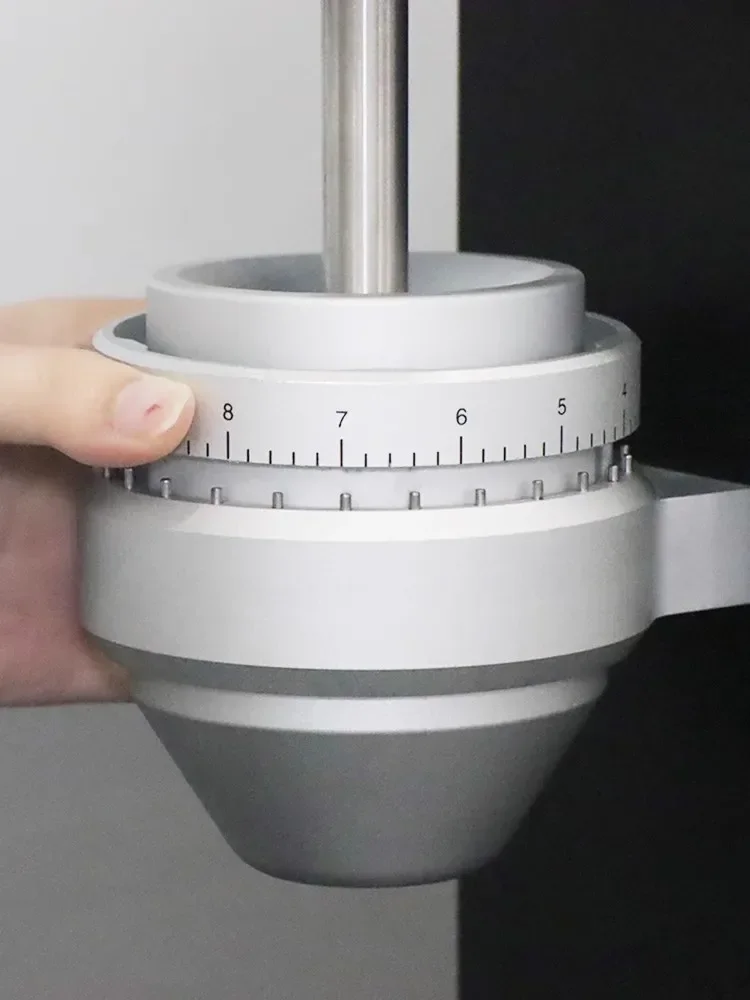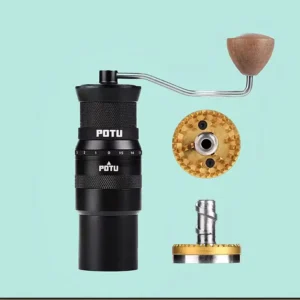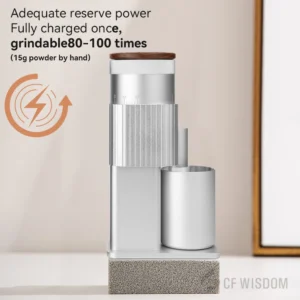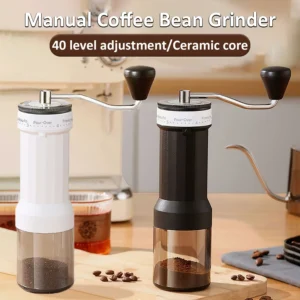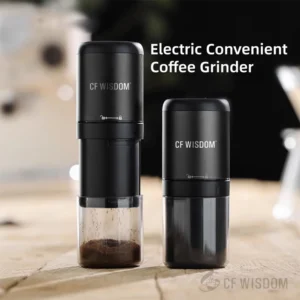What Is Burr Size and Why Does It Matter for Espresso?
When diving into the world of espresso making, you’ll encounter many technical specifications that affect your brew quality. Among these, burr size stands as one of the most influential yet frequently overlooked factors.
Burr size refers to the diameter of the grinding burrs measured in millimeters. These circular cutting discs are the heart of any quality grinder, responsible for crushing coffee beans into consistent particles. Typical burr sizes range from small hand grinder burrs around 38mm to commercial behemoths reaching 98mm.
What is Burr Size?
The measured diameter of the grinding burrs in a coffee grinder,
typically ranging from 38mm to 98mm.
The size of these burrs directly impacts three critical aspects of your espresso experience: grind consistency, heat generation during grinding, and grinding speed. These factors collectively determine the flavor complexity, extraction quality, and overall cup profile of your espresso.
Commercial espresso machines typically utilize larger burrs (64mm and above) for their superior consistency and throughput capabilities, while home machines often feature smaller burrs between 40-58mm to balance quality with space and budget constraints.
Understanding how burr size affects your espresso is essential for anyone looking to elevate their coffee experience. While precise grind settings for espresso are crucial, the actual burr diameter creates the foundation upon which all other adjustments rest. Let’s explore how this often-overlooked specification impacts every aspect of your morning ritual.
The Science of Grind Consistency: How Burr Size Affects Particle Distribution
Grind consistency stands as perhaps the most important factor in espresso extraction, and burr size plays a pivotal role in achieving uniformity. Larger burrs typically provide more consistent particle sizes for several mechanical reasons.
When coffee beans enter the grinding chamber, they need to be broken down into uniformly sized particles. Larger burrs offer several advantages in this process:
- Greater cutting surface area to process beans more thoroughly
- More stable grinding path with less wobble or deviation
- Ability to make finer adjustments between grind settings
- Reduced tendency to produce “fines” (dust-like particles) and “boulders” (oversized chunks)
The difference between a 50mm and 64mm burr set isn’t just numerical—it fundamentally changes the particle distribution curve. Larger burrs typically create a more uniform, bell-shaped distribution curve concentrated around the target grind size. Smaller burrs often produce a wider, more irregular distribution with problematic outliers.
Professional baristas consistently choose larger burrs when consistency is paramount because this directly translates to repeatability. When each shot pulls with predictable timing and flavor characteristics, customers receive a consistent experience day after day.
The impact of burr diameter on coffee grinding becomes most apparent when examining the grounds under magnification. Larger, quality burrs produce a more homogeneous particle set, while smaller burrs tend to create a more chaotic mixture. This consistency is particularly critical when consulting espresso grind size charts to achieve your desired extraction profile.
From Grind to Cup: How Burr Size Impacts Espresso Extraction
The journey from ground coffee to perfect espresso depends heavily on how consistently your coffee particles extract when exposed to hot, pressurized water. This is where the impact of burr size becomes tangible in your cup.
When coffee grounds are uniform in size, water extracts flavor compounds evenly, creating balanced, nuanced espresso. However, when grounds vary drastically in size, problems arise quickly. Water naturally seeks the path of least resistance through the coffee puck, a phenomenon known as channeling. During channeling, water rushes through larger openings between coarser particles while barely penetrating finer grounds.
The result? A shot that’s simultaneously over-extracted (bitter from the fine particles) and under-extracted (sour from the coarse particles). Even worse, these opposing flavor profiles don’t balance each other out—they create dissonant, unpleasant flavors.
Larger burrs typically minimize this issue by producing more consistent grounds, leading to:
- More even extraction throughout the puck
- Balanced sweetness, acidity, and bitterness
- Smoother mouthfeel with proper body development
- Improved clarity of flavor notes
- Consistent shot times and volumes
For the home barista, this means larger burrs generally make it easier to “dial in” the perfect shot. With fewer variables to contend with, you can focus on fine-tuning rather than fighting inconsistency. The relationship between grind size and espresso quality becomes more predictable and manageable with larger, quality burrs.
Heat Generation: How Burr Size Affects Flavor Preservation
Coffee beans contain hundreds of volatile compounds that contribute to flavor and aroma. Unfortunately, these delicate compounds are highly susceptible to heat damage during grinding. This is where burr size plays another crucial role in preserving your coffee’s potential.
Grinding coffee generates heat through friction—coffee particles rubbing against metal burrs creates thermal energy. Smaller burrs have two significant disadvantages in this arena:
Key Heat Management Factors:
– Smaller burrs must spin faster to achieve the same throughput
– Higher RPMs create more friction and thus more heat
– Smaller burrs have less metal mass to absorb and dissipate heat
– Extended grinding time with smaller burrs exposes coffee to heat longer
Larger burrs can operate at lower RPMs while maintaining or improving grinding speed. Their increased surface area processes more coffee with each rotation, and their greater mass helps absorb and dissipate heat more efficiently.
When coffee beans heat up during grinding, volatile aromatics begin to evaporate prematurely, essential oils can be altered, and subtle flavor compounds can be damaged. The result in the cup is a flatter, less vibrant espresso that lacks complexity and nuance.
Commercial grinders with large burrs often incorporate cooling systems specifically because preserving these flavor compounds is so critical to quality. For home users, flat burr hand grinders can provide excellent heat management, as manual grinding typically generates less heat than electric motors.
Speed and Efficiency: Practical Benefits of Different Burr Sizes
Beyond flavor considerations, burr size has significant practical implications for your daily coffee routine. The difference in grinding speed between burr sizes can be dramatic and impacts both workflow and user experience.
A 64mm burr set might grind 15 grams of espresso in 8 seconds, while a 50mm set could take 15 seconds for the same amount. For a single morning shot, this difference seems negligible. However, for multiple back-to-back shots or commercial settings, these seconds multiply quickly.
Comparative Grinding Speeds:
– Home use (1-4 shots daily): Smaller burrs (38-54mm) generally sufficient
– Prosumer use (5-10 shots daily): Mid-size burrs (54-64mm) offer good balance
– Light commercial (10-50 shots daily): Larger burrs (64-75mm) recommended
– High-volume commercial (50+ shots): Very large burrs (75-98mm) necessary
For home users, the primary benefit of larger burrs isn’t necessarily the time saved but the improved workflow. Quicker grinding means less waiting and more immediate feedback when dialing in shots, allowing for faster experimentation and learning.
Many home enthusiasts find that precision manual grinders with moderately sized burrs offer an excellent balance between quality and convenience. The slight increase in grinding time compared to commercial machines is offset by superior particle consistency and temperature control.
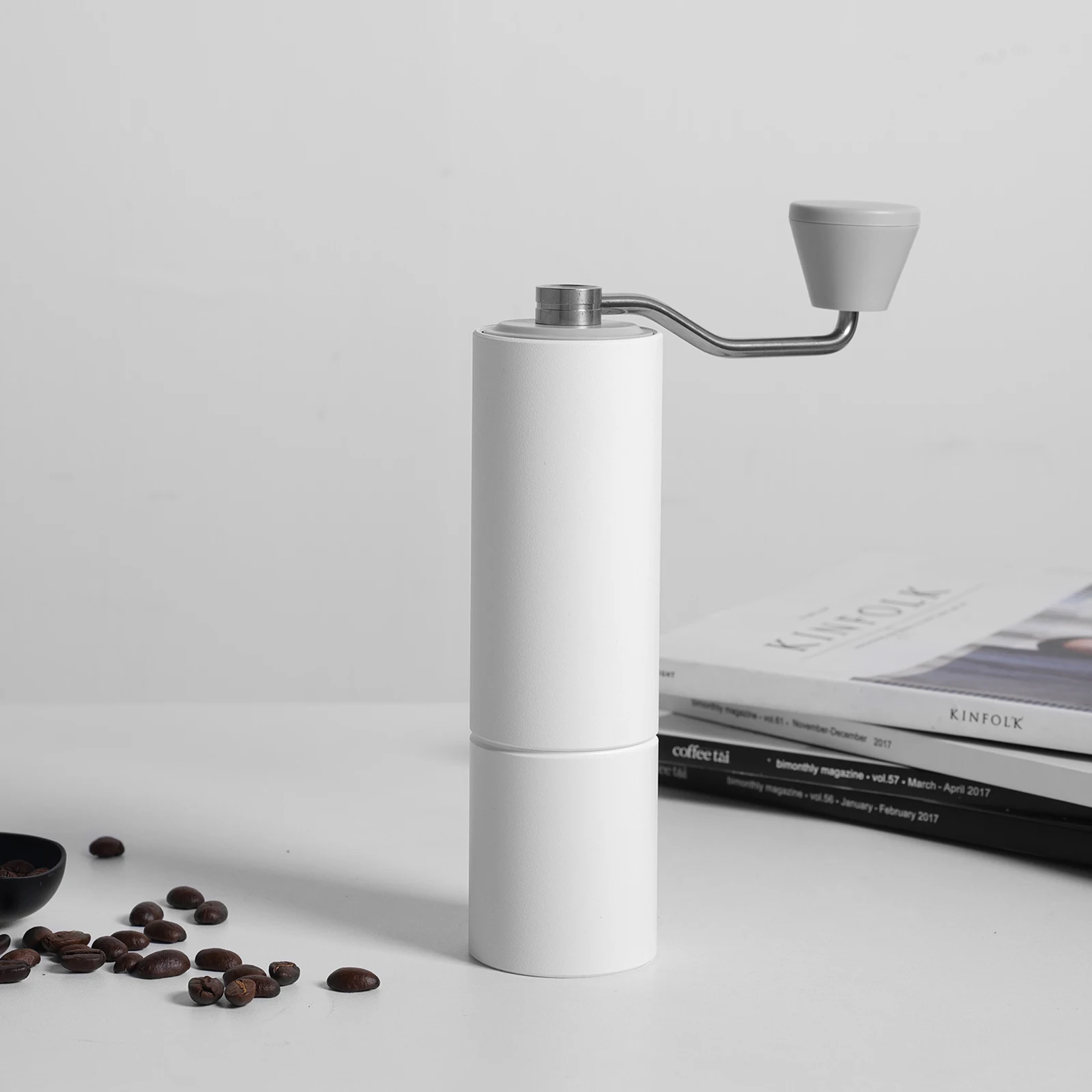
Grind Retention: The Relationship Between Burr Size and Fresh Grounds
Grind retention—coffee that remains stuck inside the grinder after each use—poses a significant challenge for espresso enthusiasts. Retained grounds become stale, contaminate future doses with old coffee, and make it difficult to experiment with different beans or grind settings.
The relationship between burr size and retention isn’t straightforward. While larger burr chambers can potentially trap more coffee, the actual design of the grinding path and exit chute often matters more than burr diameter alone.
Key Retention Factors:
– Chamber design and exit path geometry
– Presence of anti-static features
– Vertical vs. angled burr orientation
– Material finish and coating
– Grinder cleaning and maintenance routine
For espresso preparation, retention is particularly problematic because even small amounts of stale coffee can noticeably impact flavor. Additionally, when adjusting grind settings, retained coffee from the previous setting can make it difficult to evaluate changes accurately.
Many manual coffee grinders designed for espresso feature designs that minimize retention regardless of burr size. These grinders often employ direct-drop systems where grounds fall straight from the burrs into the collection chamber with minimal horizontal paths where coffee might get trapped.
For home users, selecting a grinder with minimal retention often proves more important than maximizing burr size, especially when frequently switching between different coffee varieties or brewing methods.
Flat vs. Conical Burrs: Size Considerations for Different Geometries
When evaluating burr size, it’s essential to understand that the geometry of the burrs—flat versus conical—interacts with size to produce different grinding characteristics.
| Burr Type | Common Sizes | Grind Profile | Typical Use Cases |
|---|---|---|---|
| Flat | 58mm, 64mm, 75mm, 83mm, 98mm | Unimodal (consistent size) | Lighter roasts, filter coffee, modern espresso |
| Conical | 38mm, 40mm, 50mm, 63mm, 71mm | Bimodal (wider distribution) | Traditional espresso, darker roasts, milk drinks |
Flat burrs consist of two parallel rings with cutting teeth that face each other. They typically produce a more uniform particle size distribution (unimodal), leading to clean, bright shots that highlight acidity and clarity. As flat burrs increase in size, they maintain this characteristic while improving consistency and reducing heat.
Conical burrs feature a cone-shaped inner burr that fits inside a ring-shaped outer burr. They tend to produce a bimodal distribution—a mix of target-size particles and some fines—which many believe contributes to body and texture in espresso. Larger conical burrs maintain this characteristic while improving efficiency.
The impact of burr shape on espresso consistency can sometimes be more noticeable than size differences alone. Many espresso enthusiasts develop preferences for either flat or conical profiles based on their taste preferences and typical coffee selections.
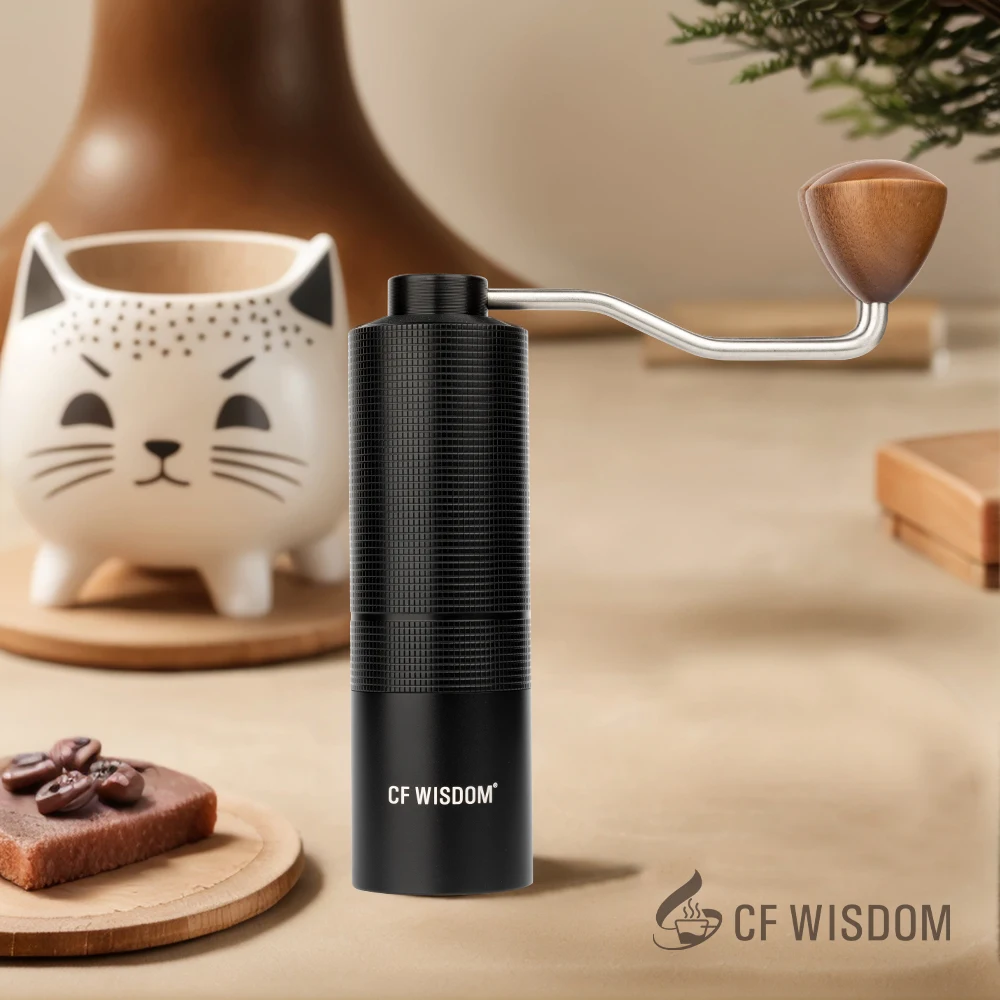
Finding Your Fit: Burr Size Recommendations for Home vs. Commercial Use
Selecting the appropriate burr size depends largely on your specific needs, budget, and usage patterns. Here’s a practical guide to help you navigate the options:
For Home Enthusiasts:
– Entry-level (40-50mm): Suitable for occasional espresso drinkers who prepare 1-2 shots daily. These grinders typically cost $200-500 and offer good performance with some compromises on consistency and speed.
– Mid-range (50-64mm): Ideal for dedicated home baristas making 2-6 shots daily. Priced between $500-1000, these grinders balance performance with practicality.
– High-end (64mm+): Perfect for serious enthusiasts who prioritize quality above all. Costing $1000+, these grinders deliver commercial-level results in a home setting.
For Commercial Use:
– Starting point (64mm): Suitable for small cafes serving up to 50 espressos daily
– Mid-volume (75mm): Appropriate for medium-sized operations with 50-150 daily shots
– High-volume (83mm+): Necessary for busy establishments serving 150+ espressos daily
When selecting a grinder, remember that physical footprint increases substantially with burr size. Many excellent manual espresso grinders offer impressive performance with moderate burr sizes, making them ideal for space-conscious home users.
The most important consideration is matching your grinder to your personal workflow, frequency of use, and quality expectations rather than simply choosing the largest burrs available.
Beyond Size: Other Critical Factors That Work With Burr Size
While burr size significantly impacts espresso quality, it works in concert with several other critical factors to determine overall performance:
Burr Material and Coating
The material composition of burrs—typically steel, ceramic, or titanium-coated—affects durability, heat retention, and grind characteristics. Ceramic burrs retain less heat but can be more brittle, while steel burrs offer durability but may generate more heat. Premium coatings like titanium nitride can extend life and improve performance.
Burr Alignment
Even the largest, highest-quality burrs underperform when improperly aligned. Precise alignment ensures that the burrs maintain consistent distance throughout rotation, creating uniform particle sizes. Poor alignment creates inconsistent grinding regardless of burr size.
Motor Power and Quality
Larger burrs require more torque to operate effectively. An underpowered motor paired with large burrs can stall under load, overheat, or damage itself. Conversely, an appropriately matched motor allows the burrs to perform at their best.
Grinder Build Quality
The overall construction of the grinder—including bearing quality, chassis rigidity, and adjustment mechanism precision—directly impacts how well the burrs can perform. A wobbling burr carrier or imprecise adjustment system negates the potential benefits of larger burrs.
Understanding why burr grinders are essential for espresso means recognizing that these factors work as a system. The best results come from well-matched components working in harmony rather than maximizing any single specification.
Is Bigger Always Better? The Truth About Burr Size
Is a larger burr always superior for espresso grinding?
While larger burrs offer theoretical advantages in consistency, speed, and heat management, they aren’t automatically better in every situation. A well-designed, precisely manufactured 58mm burr set can outperform a poorly aligned 75mm set.
What are the real advantages of larger burrs?
Larger burrs typically provide more consistent particle distribution, faster grinding times, and better heat dissipation. These benefits translate to more consistent extraction and potentially more complex flavor profiles.
What drawbacks come with larger burrs?
Larger burrs generally command higher prices, require more space, add weight to the grinder, and sometimes increase retention. For home users, the cost-to-benefit ratio often diminishes beyond 64mm.
When might a smaller burr be preferable?
Smaller burrs make sense when budget constraints are significant, space is limited, or portability matters. Many compact grinders with high-quality smaller burrs deliver excellent results for typical home use.
At what point do diminishing returns begin?
For most home users making 1-4 espressos daily, the improvements beyond 64mm burrs become increasingly subtle relative to the additional cost. Commercial users with higher volume requirements will continue seeing benefits at larger sizes.
The smart approach is evaluating burr quality, alignment, and overall grinder design alongside size rather than pursuing maximum diameter at all costs. Ceramic burr coffee grinders with moderate sizes often provide excellent value by focusing on material quality over sheer size.
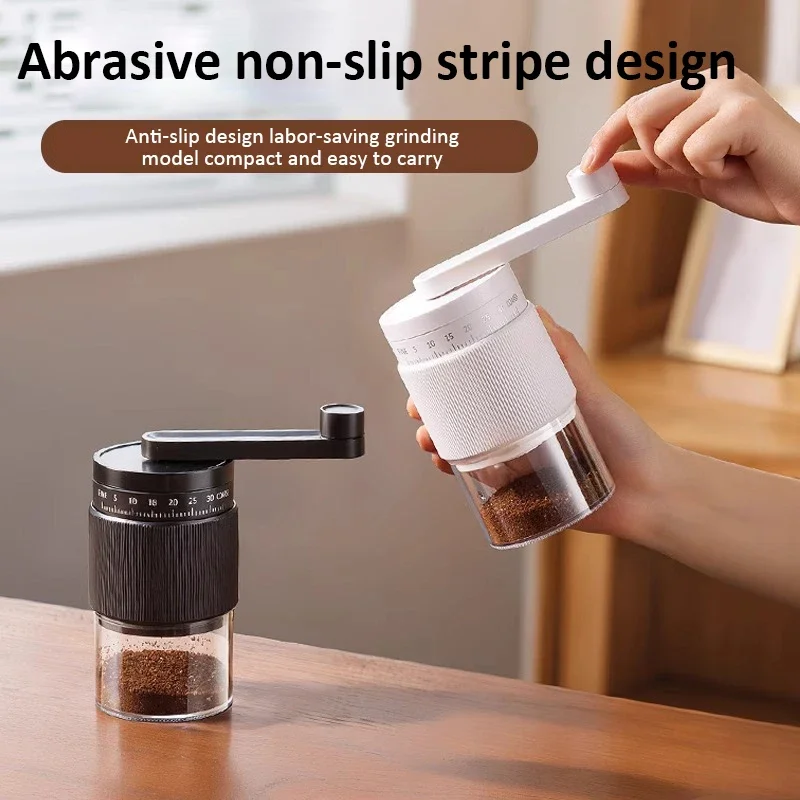
How to Choose: Matching Burr Size to Your Espresso Needs
To find your ideal burr size, consider these key questions:
What’s your budget?
– Under $300: Focus on quality 38-50mm burrs
– $300-700: Explore premium 50-58mm options
– $700-1200: Consider quality 58-64mm burrs
– $1200+: Evaluate premium 64mm+ burrs
How many shots do you make daily?
– 1-2 shots: 38-50mm burrs typically sufficient
– 3-6 shots: 50-64mm provides good balance
– 7+ shots: 64mm+ offers worthwhile time savings
What flavor profiles do you prefer?
– Bright, clean, distinct flavor notes: Consider flat burrs
– Rich, full-bodied, traditional espresso: Consider conical burrs
– Experimental variety: Prioritize consistency over specific size
What’s your workflow priority?
– Minimal retention for switching coffees: Design matters more than size
– Speed and efficiency: Larger burrs offer clear advantages
– Single-dosing: Look for designs that complement this approach
How much space can you dedicate?
– Limited counter space: Consider compact options with 38-54mm burrs
– Dedicated coffee station: More freedom to consider larger options
Fine Adjustment Hand Grinder, Precision Manual Grinder, Travel Coffee Grinder
Price range: $185.11 through $494.63 Select options This product has multiple variants. The options may be chosen on the product pageHand Burr Grinder, Hand Crank Coffee Grinder, Manual Espresso Grinder, Portable Coffee Grinder
Price range: $262.72 through $300.22 Select options This product has multiple variants. The options may be chosen on the product pageHand Burr Grinder, Manual Coffee Grinder Stainless Steel, Precision Manual Grinder
Price range: $183.64 through $187.52 Select options This product has multiple variants. The options may be chosen on the product pageCeramic Burr Coffee Grinder, Hand Burr Grinder, Hand Crank Coffee Grinder, Manual Coffee Bean Grinder
Price range: $59.17 through $59.96 Select options This product has multiple variants. The options may be chosen on the product pageManual Coffee Grinder Stainless Steel, Manual Espresso Grinder, Travel Coffee Grinder
Price range: $276.22 through $276.39 Select options This product has multiple variants. The options may be chosen on the product page
Remember that burr size is just one factor in a complex system. At Savor Suite, we carefully evaluate all aspects of grinder performance to offer options that deliver excellent results regardless of burr size. Finding the right espresso grind settings for perfect shots often matters more than having the largest possible burrs.
Common Questions About Burr Size for Espresso
Can I make good espresso with 50mm burrs?
Absolutely. Many high-quality grinders with 50mm burrs produce excellent espresso. The key factors are burr quality, alignment precision, and overall grinder design rather than size alone. For home use, well-made 50mm burrs often provide an excellent balance of performance, size, and value.
How long do different size burrs typically last before replacement?
Burr longevity depends more on material and usage than size. Steel burrs typically handle 500-1500 pounds of coffee before noticeable degradation, while ceramic can vary widely based on quality. Premium burrs with specialized coatings may last significantly longer. Daily usage volume affects this timeline—a home user might see 5-10 years of service, while a busy café might need replacement annually.
Do larger burrs require more maintenance?
Not necessarily. Maintenance requirements depend more on grinder design and usage patterns than burr size. However, larger burrs may collect more grounds in their chambers, potentially requiring more frequent cleaning to maintain optimal performance. The cleaning process itself is typically similar regardless of size.
How much difference will I taste between a 58mm and 64mm burr?
For most home users, the difference is subtle but noticeable with practice. The 64mm burrs typically produce slightly more consistent particle sizes, which can translate to greater clarity and definition of flavor notes. However, factors like coffee quality, water chemistry, and brewing technique often have more pronounced effects on taste than this 6mm difference in burr size.
Are titanium-coated burrs worth the extra cost?
Titanium-coated burrs offer improved hardness and durability, potentially extending burr life by 2-3 times compared to standard steel. For high-volume users, this durability justifies the premium. For typical home users, the benefit is primarily longevity rather than immediate performance improvement. The definitive guide to coffee burr uniformity provides more insight into how coatings affect performance.
Key Takeaways: Making Burr Size Work for Your Espresso
Consistency is king: Larger burrs generally produce more uniform particles, leading to more even extraction and balanced espresso flavors.
System thinking matters: Burr size works in conjunction with material, alignment, motor power, and grinder design—all components must work harmoniously for optimal results.
Match to your needs: Choose burr size based on your specific requirements for volume, space constraints, budget, and flavor preferences rather than simply seeking the largest option available.
Quality over quantity: A smaller, high-quality, well-aligned burr set often outperforms larger, lower-quality alternatives—focus on overall grinder quality rather than maximizing any single specification.
Taste is personal: While technical aspects of burr size are objective, flavor preference is subjective—the “best” burr size is ultimately the one that produces espresso you enjoy drinking.
Understanding burr size empowers you to make informed decisions when selecting a grinder, helping you achieve exceptional espresso that matches your personal taste preferences and workflow needs.

